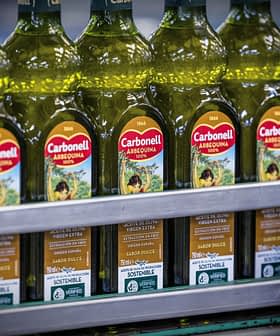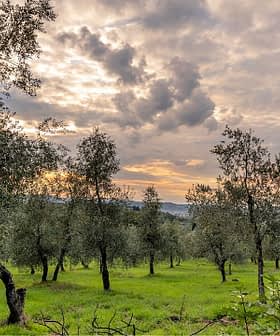More frequent extreme weather events and a changing climate, which impact farming and food security on every continent, are worsening, according to the World Meteorological Organization (WMO).
The data gathered by WMO and published in its State of Global Climate Report 2021 show how human activities have released record levels of greenhouse gases in 2021, one of the main drivers of average surface temperature rise.
In 2050, we may have almost 10 billion people to feed, and ensuring adequate food security for all while curbing greenhouse gas emissions and protecting the environment is one of the biggest challenges we face.
Increases in average ocean temperatures also accelerated in 2021. The WMO estimated that ocean levels rose by 10 centimeters in the last three decades.
Along with rising temperatures and sea levels, the WMO researchers added that the ocean is becoming more acidic, reaching a 26,000-year high.
See Also:Study Reveals Impacts of Climate Change on Spanish Olive SectorThe report further found that snow cover, sea ice cover and glaciers also are shrinking at an alarming rate. In addition, the WMO warned that the last seven years were the warmest on record.
Antonio Guterres, the secretary-general of the United Nations, called the report a “dismal litany of humanity’s failure to tackle climate disruption.”
He warned that time is running out to change course and curtail at least the worst impacts of climate change.
In his video message, Guterres focused on immediate actions that could be taken in energy generation, which is considered the largest contributor to climate change.
These actions require a paradigm shift, where renewable energy technologies become essential global public goods and are more easily traded and exchanged.
The U.N. chief also asked for a more diversified and open renewables supply chain and emphasized the need to stop subsidizing fossil fuels. On top of this, Guterres asked for public and private investments in renewable energy to triple “before it is too late.”
Petteri Taalas, the WMO’s secretary-general, said, “human-induced greenhouse gases will warm the planet for many generations to come.”
“Sea level rise, ocean heat and acidification will continue for hundreds of years unless means to remove carbon from the atmosphere are invented,” he added.
According to Taalas, key indicators show the growing impact of climate change on the population.
“Loss and damages of more than $100 billion (€93 billion), as well as severe impacts on food security and humanitarian aspects due to high-impact weather and climate events have been reported,” he said.
Lev Neretin, senior natural resources officer at the office of climate change, biodiversity and environment (OCB) at the Food and Agriculture Organization (FAO), told Olive Oil Times that “weather extremes are one of the biggest drivers of food crises together with economic shocks, conflict and insecurity.”
“Small-scale producers, including farmers, fishers, foresters and pastoralists, are the backbone of food security, but they are also the most vulnerable to climate change and extreme weather events,” he added.
According to the FAO, increasing climate resilience is a top priority that relies on many different measures such as “expanding food production through climate-smart agroecology and other inclusive approaches, strengthening safety nets, diversifying livelihoods, providing critical inputs for cereal and vegetable production as well as protecting livestock with treatments, vaccinations, feed and water.”
Such an approach is even more relevant where food availability is limited, and access to food is affected by rising prices.
See Also:Global Agriculture Loses Billions of Working Hours to Heat, Study Says“Building resilience also requires awareness of climate and environmental risks and the effective and timely management of these risks, not just at the farm level but also across agrifood value chains,” Neretin said.
“Anticipatory action is a key pillar of FAO’s work on resilience, which is a major step to shift from disaster response toward preventative and adaptive action,” he added.
“In 2050, we may have almost 10 billion people to feed, and ensuring adequate food security for all while curbing greenhouse gas emissions and protecting the environment is one of the biggest challenges we face,” Neretin continued.
He further explained how “food security is not just about quantity, but also quality. Humanity today relies on three main crops: maize, rice and wheat.”
“This has a number of implications. One of the concerns is the continuous loss of agrobiodiversity, which ensures healthy and diversified diets,” Neretin added. “Another is the possibility of increasing food crises driven by market volatility and conflict.”
OCB researchers also believe that food loss and waste is a global challenge alongside growing demand for animal proteins and other resource-intensive foods.
“Existing high amounts of food loss and waste could feed around 1.26 billion people per year,” Neriten said.
Currently, food insecurity comes mostly from conflicts. Between 2018 and 2021, the OCB said the number of people in crisis situations in countries where conflict was the main driver of acute food insecurity increased by 88 percent, to just over 139 million.
“Agrifood systems and the rural economy play a fundamental role in peace and security that in turn ensures lasting impacts on human development,” Neriten said.
FAO researchers believe that countries should invest in adaptation and mitigation strategies and develop early warning and action mechanisms to curtail or avoid damage and losses from disasters.
“Transforming agrifood systems to become more efficient, inclusive, resilient and sustainable is a key solution to global crises: hunger, malnutrition, climate change, biodiversity loss and ecosystem degradation, ensuring safer, more affordable and healthier diets for the world’s growing population,” Neriten said.
“By leveraging the power of science, technology, innovation, bio-economy and traditional knowledge, we can enter a new paradigm to ensure that agrifood systems globally are green and climate-resilient,” he added.
“But this transformation will fail if it is not equal and inclusive,” Neriten concluded. “Smallholder farmers, fishers and foresters and their communities, including women, youth and indigenous peoples, are the key agents and beneficiaries of our agrifood systems.”








